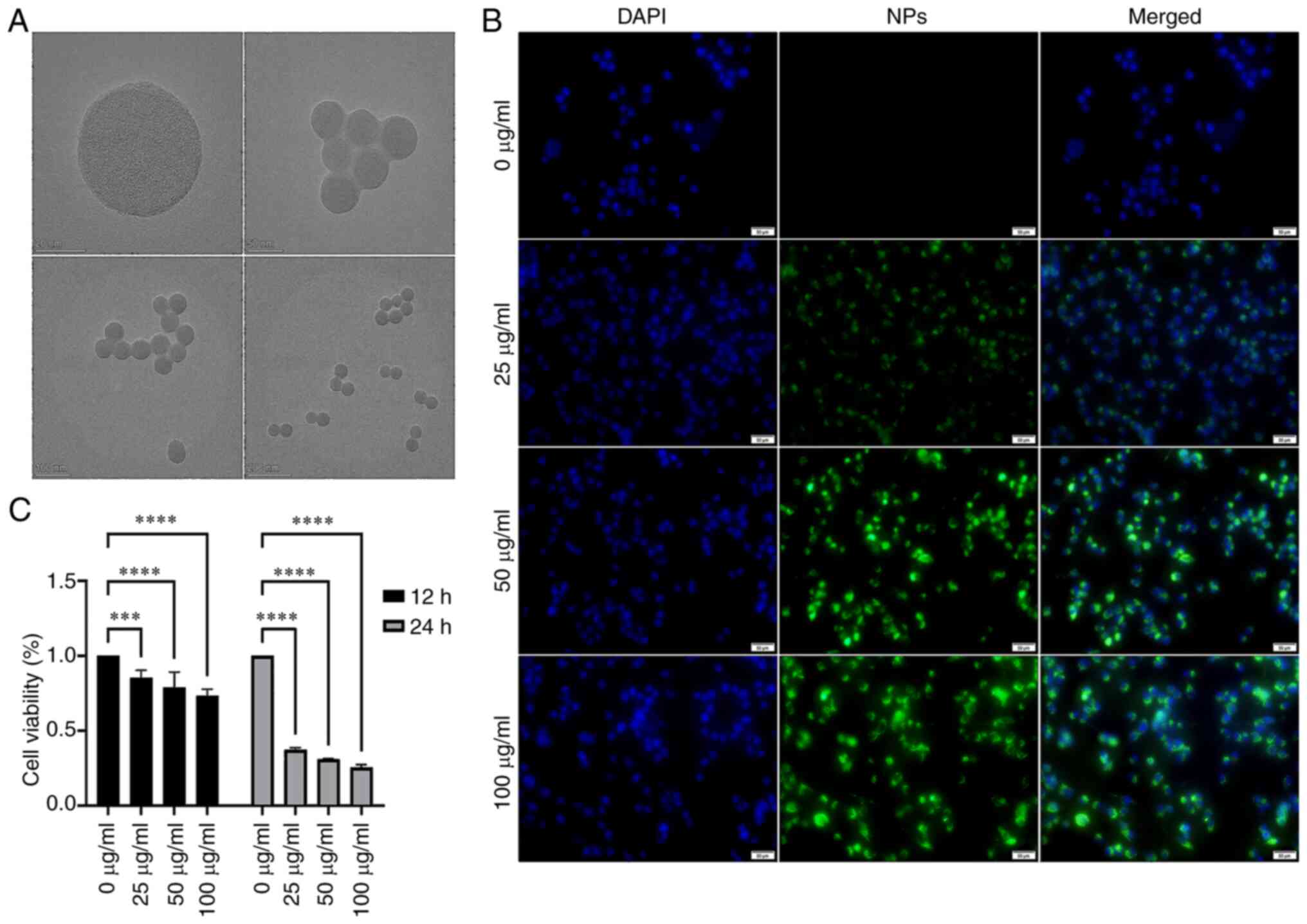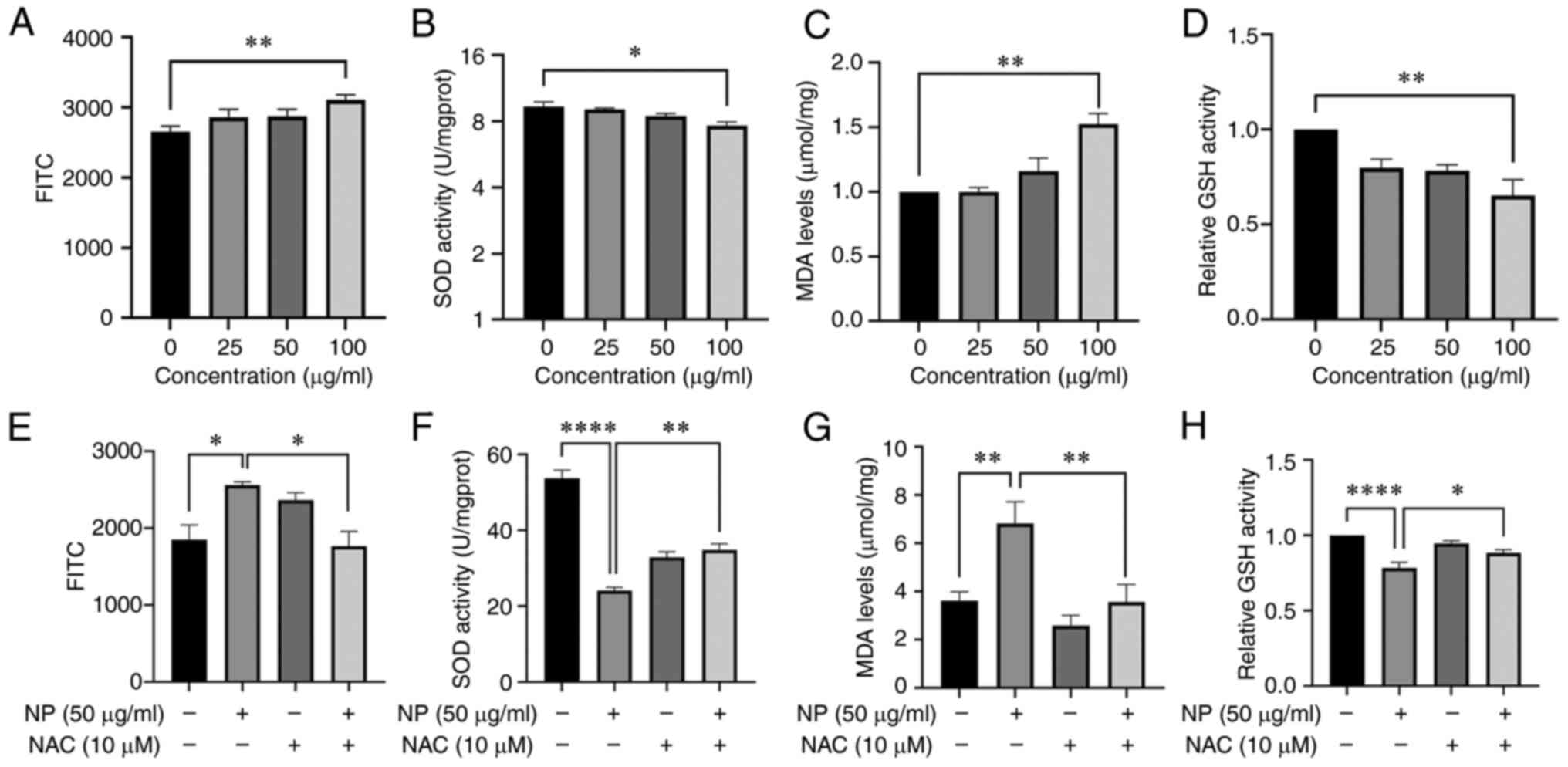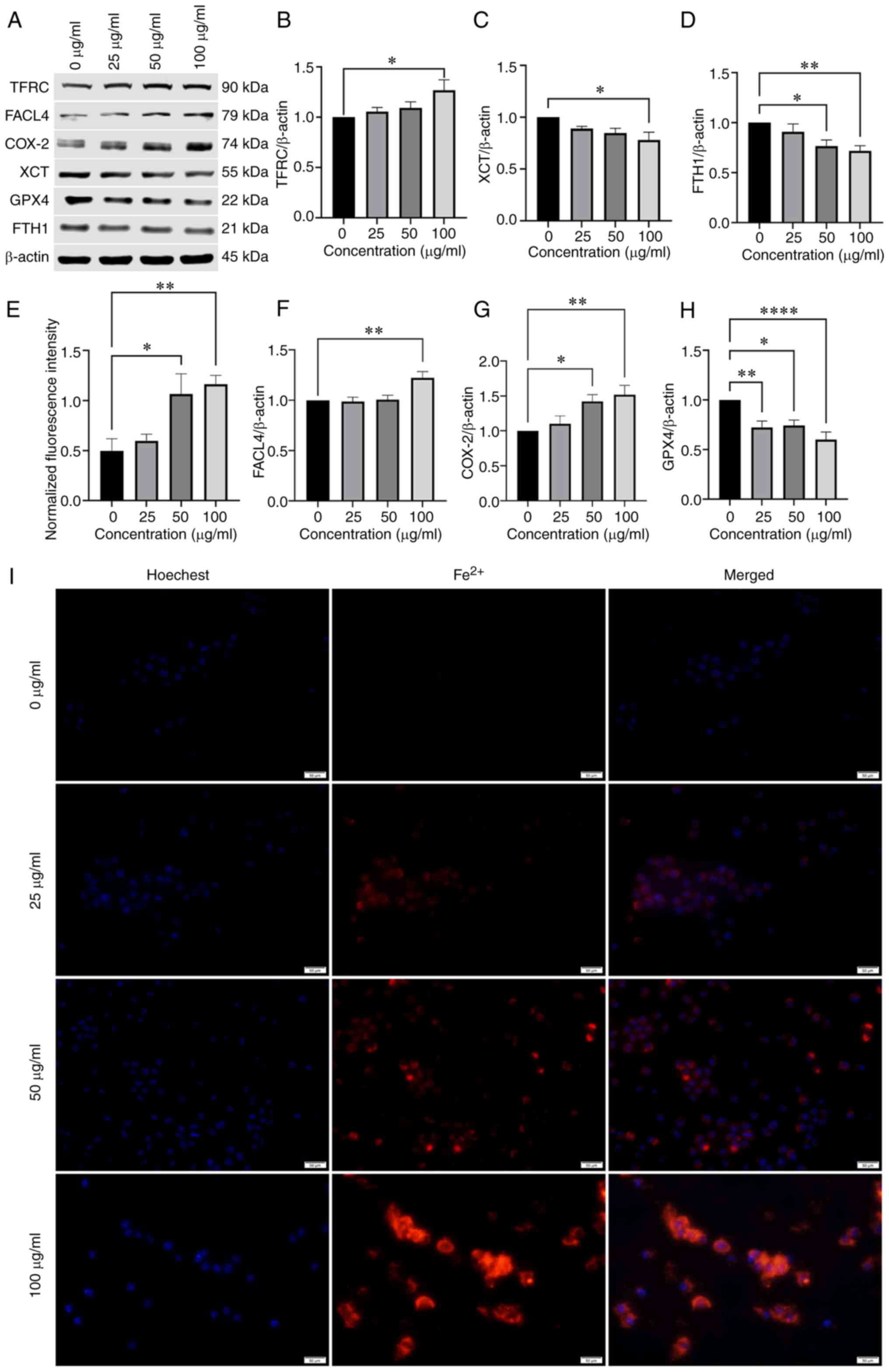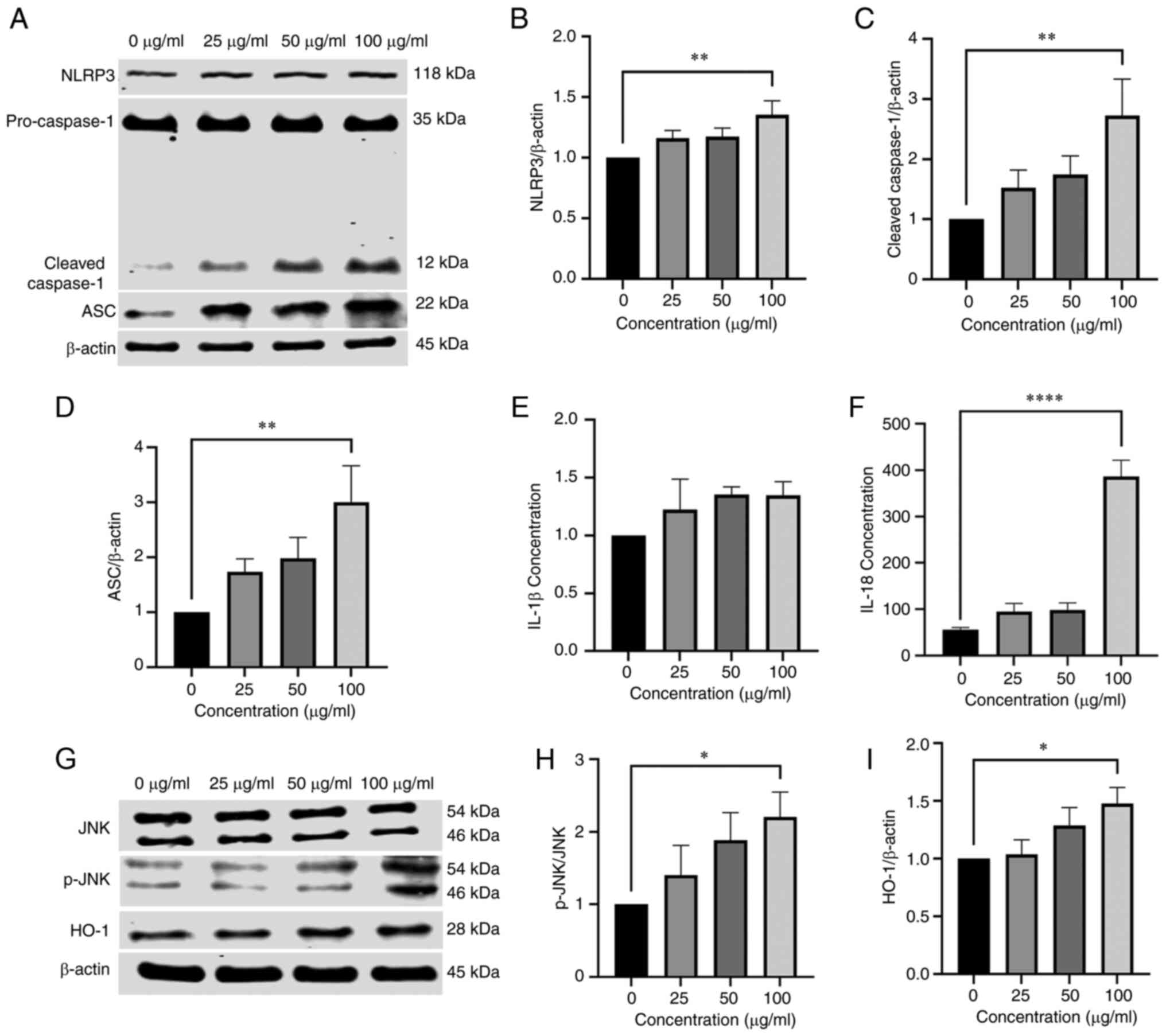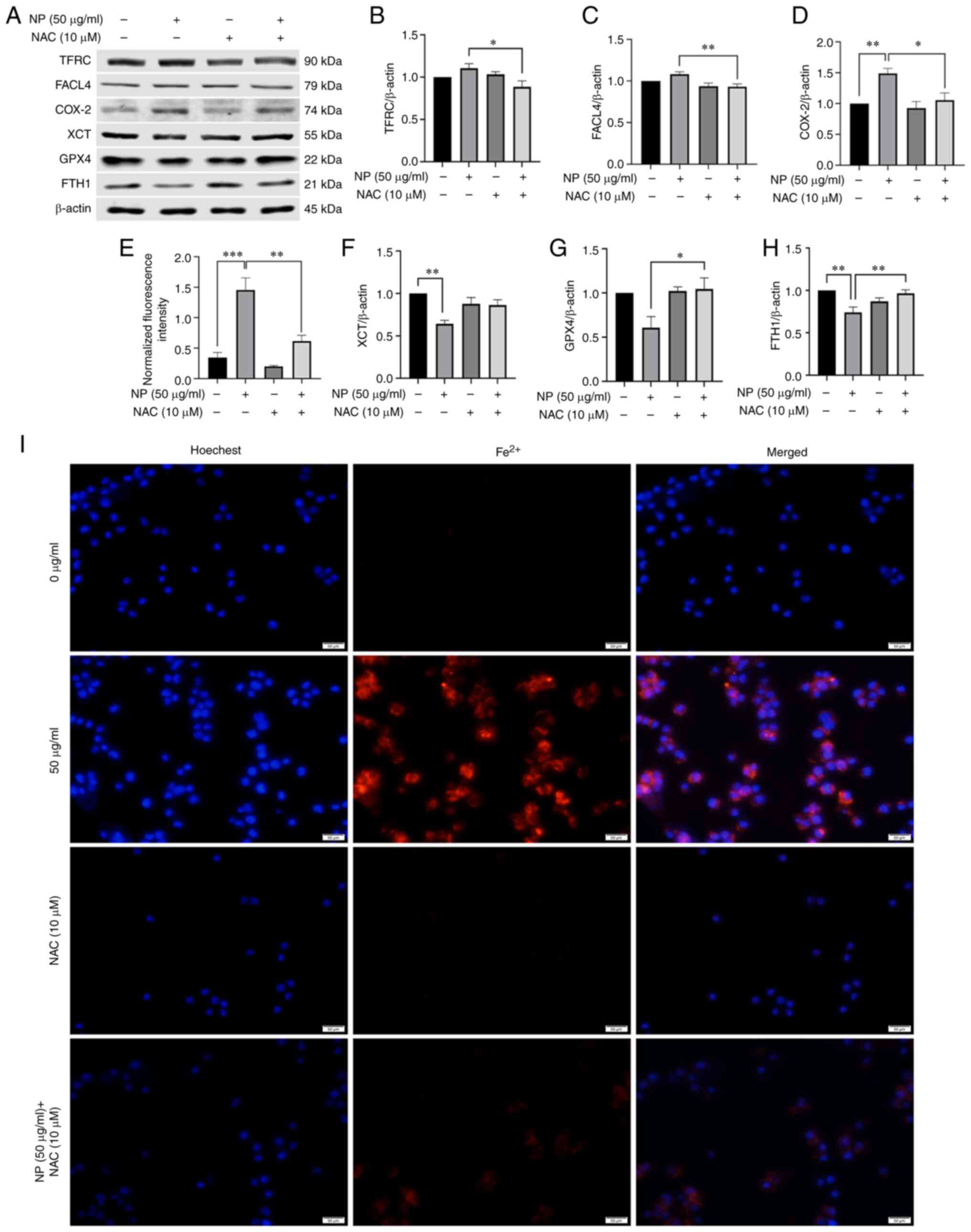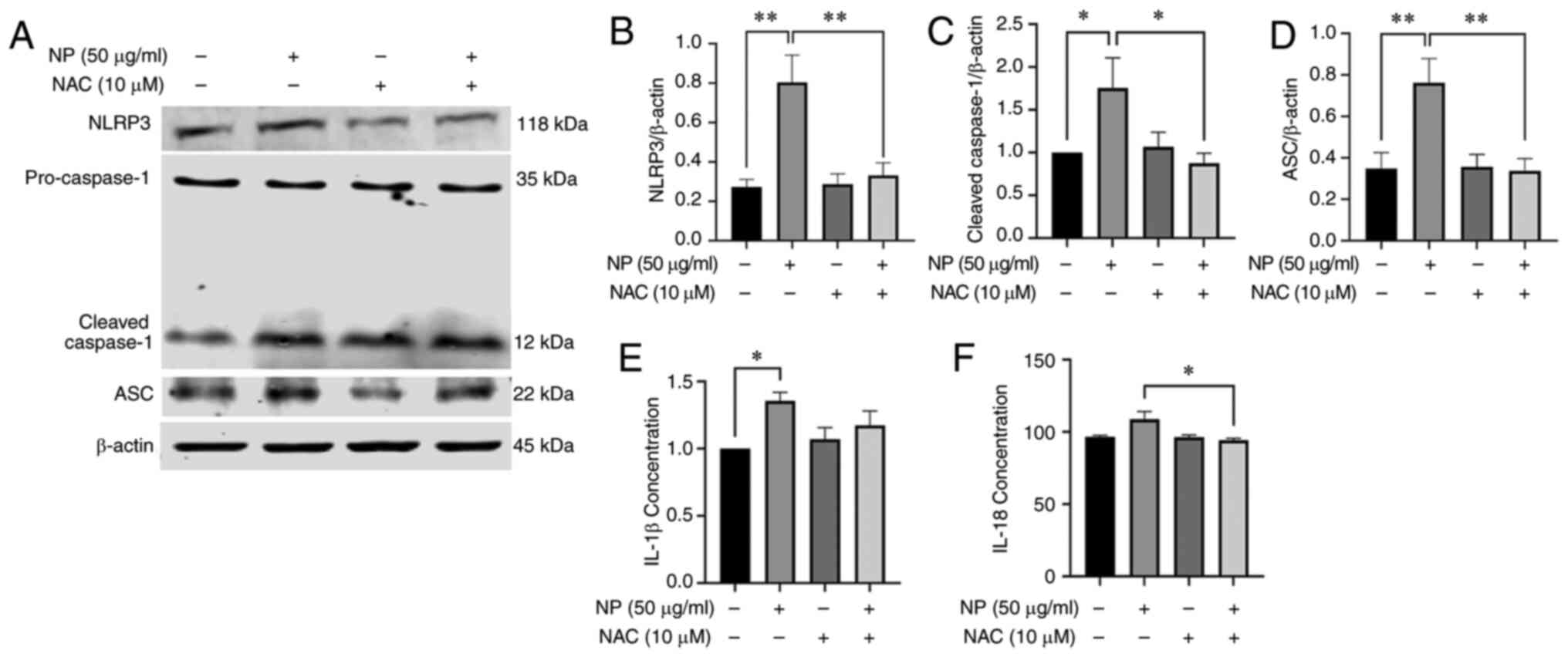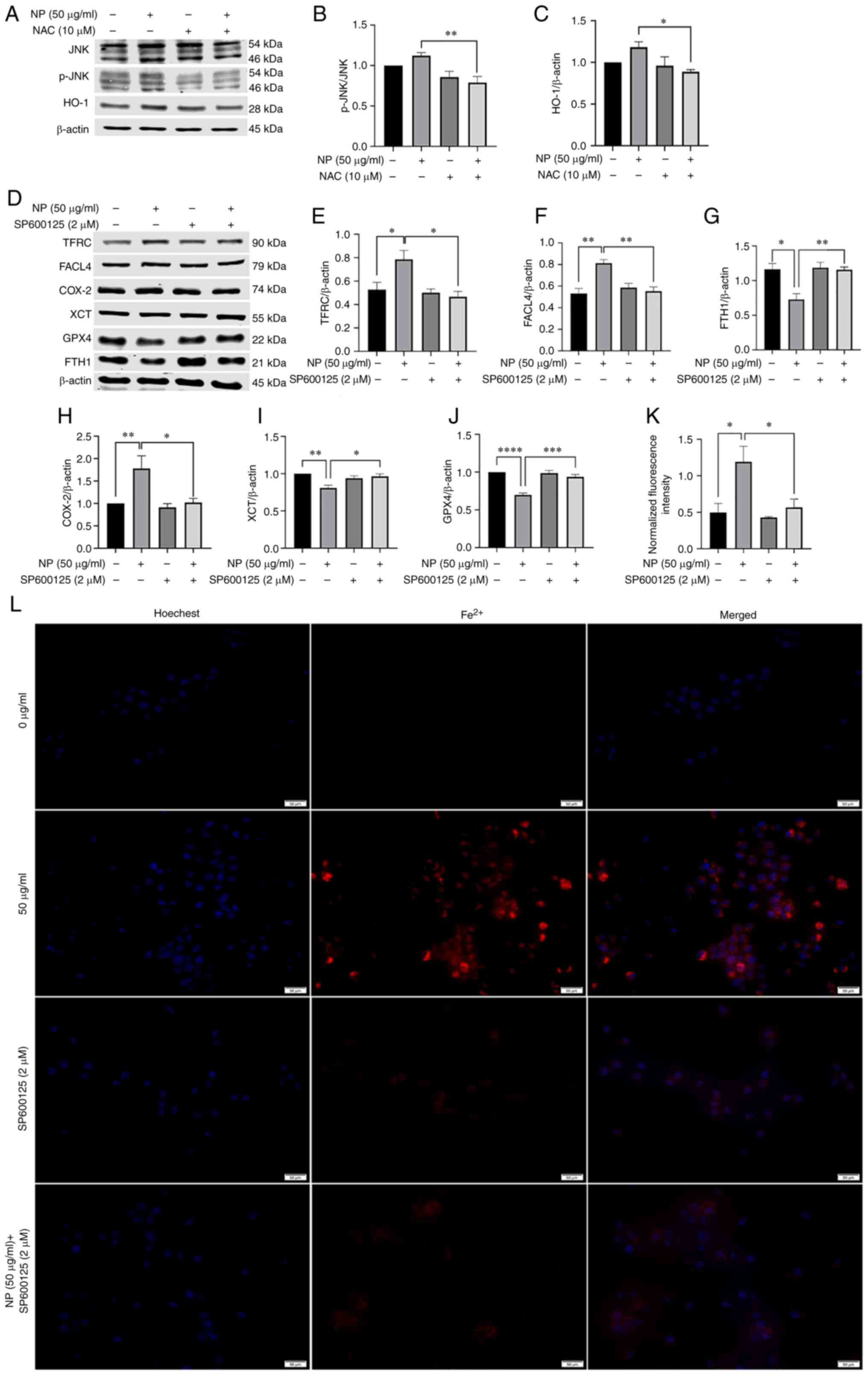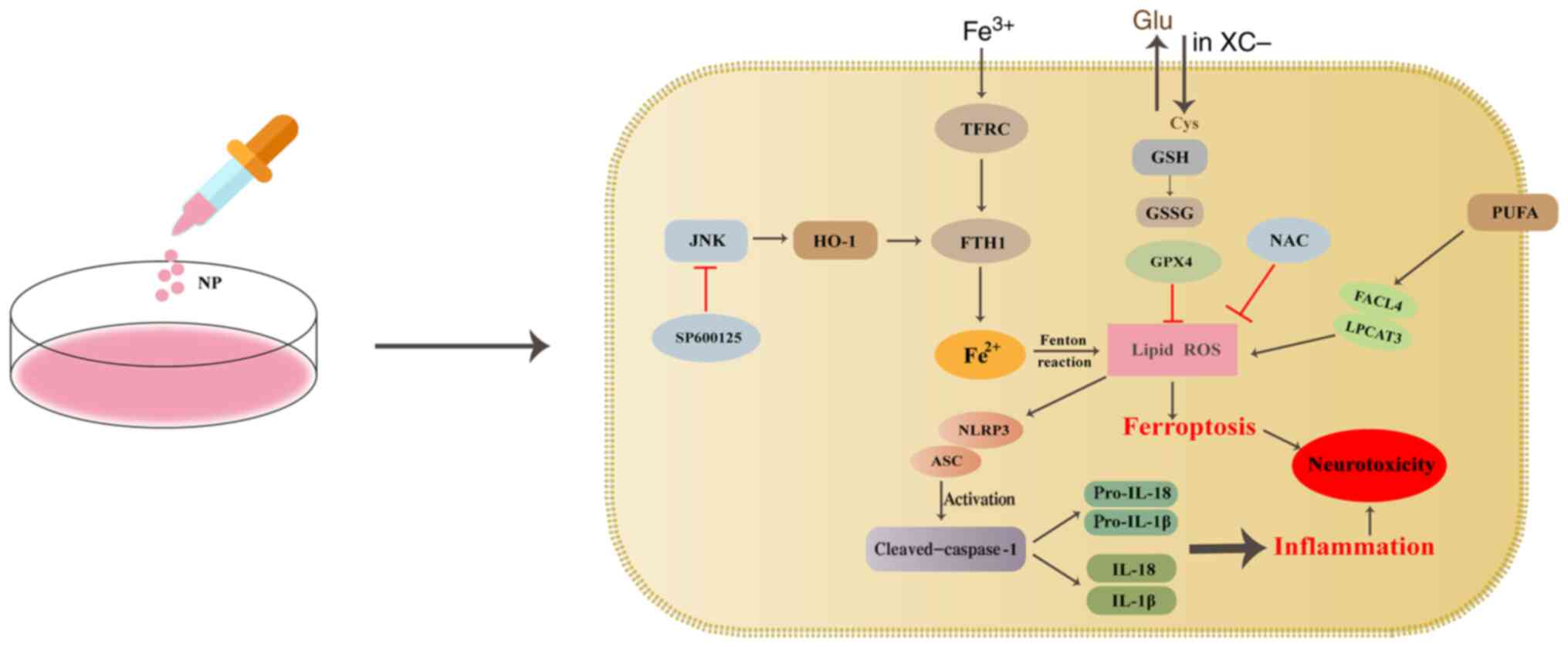|
1
|
Geyer R, Jambeck JR and Law KL:
Production, use, and fate of all plastics ever made. Sci Adv.
3:e17007822017. View Article : Google Scholar : PubMed/NCBI
|
|
2
|
Rhodes CJ: Plastic pollution and potential
solutions. Sci Prog. 101:207–260. 2018. View Article : Google Scholar : PubMed/NCBI
|
|
3
|
Liu J, Lezama N, Gasper J, Kawata J,
Morley S, Helmer D and Ciminera P: Burn pit emissions exposure and
respiratory and cardiovascular conditions among airborne hazards
and open burn pit registry participants. J Occup Environ Med.
58:e249–e255. 2016. View Article : Google Scholar : PubMed/NCBI
|
|
4
|
Kubowicz S and Booth AM: Biodegradability
of plastics: Challenges and misconceptions. Environ Sci Technol.
51:12058–12060. 2017. View Article : Google Scholar : PubMed/NCBI
|
|
5
|
Avio CG, Gorbi S and Regoli F: Plastics
and microplastics in the oceans: From emerging pollutants to
emerged threat. Mar Environ Res. 128:2–11. 2017. View Article : Google Scholar
|
|
6
|
Waring RH, Harris RM and Mitchell SC:
Plastic contamination of the food chain: A threat to human health?
Maturitas. 115:64–68. 2018. View Article : Google Scholar : PubMed/NCBI
|
|
7
|
Jambeck JR, Geyer R, Wilcox C, Siegler TR,
Perryman M, Andrady A, Narayan R and Law KL: Marine pollution.
Plastic waste inputs from land into the ocean. Science.
347:768–771. 2015. View Article : Google Scholar : PubMed/NCBI
|
|
8
|
Thompson RC, Olsen Y, Mitchell RP, Davis
A, Rowland SJ, John AW, McGonigle D and Russell AE: Lost at sea:
Where is all the plastic? Science. 304:8382004. View Article : Google Scholar : PubMed/NCBI
|
|
9
|
Li J, Qu X, Su L, Zhang W, Yang D,
Kolandhasamy P, Li D and Shi H: Microplastics in mussels along the
coastal waters of China. Environ Pollut. 214:177–184. 2016.
View Article : Google Scholar : PubMed/NCBI
|
|
10
|
Neves D, Sobral P, Ferreira JL and Pereira
T: Ingestion of microplastics by commercial fish off the Portuguese
coast. Mar Pollut Bull. 101:119–126. 2015. View Article : Google Scholar : PubMed/NCBI
|
|
11
|
Liebezeit G and Liebezeit E: Non-pollen
particulates in honey and sugar. Food Addit Contam Part A Chem Anal
Control Expo Risk Assess. 30:2136–2140. 2013. View Article : Google Scholar : PubMed/NCBI
|
|
12
|
Ossmann BE, Sarau G, Holtmannspotter H,
Pischetsrieder M, Christiansen SH and Dicke W: Small-sized
microplastics and pigmented particles in bottled mineral water.
Water Res. 141:307–316. 2018. View Article : Google Scholar : PubMed/NCBI
|
|
13
|
Marra F and Tacke F: Roles for chemokines
in liver disease. Gastroenterology. 147:577–594.e1. 2014.
View Article : Google Scholar : PubMed/NCBI
|
|
14
|
MacKenzie EL, Iwasaki K and Tsuji Y:
Intracellular iron transport and storage: From molecular mechanisms
to health implications. Antioxid Redox Signal. 10:997–1030. 2008.
View Article : Google Scholar : PubMed/NCBI
|
|
15
|
Yang WS and Stockwell BR: Ferroptosis:
Death by lipid peroxidation. Trends Cell Biol. 26:165–176. 2016.
View Article : Google Scholar :
|
|
16
|
Wang S, Chen L, Shi X, Wang Y and Xu S:
Polystyrene microplastics-induced macrophage extracellular traps
contributes to liver fibrotic injury by activating
ROS/TGF-β/Smad2/3 signaling axis. Environ Pollut. 324:1213882023.
View Article : Google Scholar
|
|
17
|
Sarasamma S, Audira G, Siregar P, Malhotra
N, Lai YH, Liang ST, Chen JR, Chen KH and Hsiao CD: Nanoplastics
cause neurobehavioral impairments, reproductive and oxidative
damages, and biomarker responses in zebrafish: Throwing up alarms
of widespread health risk of exposure. Int J Mol Sci. 21:14102020.
View Article : Google Scholar
|
|
18
|
Lee CW, Hsu LF, Wu IL, Wang YL, Chen WC,
Liu YJ, Yang LT, Tan CL, Luo YH, Wang CC, et al: Exposure to
polystyrene microplastics impairs hippocampus-dependent learning
and memory in mice. J Hazard Mater. 430:1284312022. View Article : Google Scholar : PubMed/NCBI
|
|
19
|
Hoseini Z, Sepahvand F, Rashidi B,
Sahebkar A, Masoudifar A and Mirzaei H: NLRP3 inflammasome: Its
regulation and involvement in atherosclerosis. J Cell Physiol.
233:2116–2132. 2018. View Article : Google Scholar
|
|
20
|
Kim YG, Kim SM, Kim KP, Lee SH and Moon
JY: The role of inflammasome-dependent and inflammasome-independent
NLRP3 in the kidney. Cells. 8:13892019. View Article : Google Scholar : PubMed/NCBI
|
|
21
|
Hou J, Lei Z, Cui L, Hou Y, Yang L, An R,
Wang Q, Li S, Zhang H and Zhang L: Polystyrene microplastics lead
to pyroptosis and apoptosis of ovarian granulosa cells via
NLRP3/Caspase-1 signaling pathway in rats. Ecotoxicol Environ Saf.
212:1120122021. View Article : Google Scholar : PubMed/NCBI
|
|
22
|
Wang F, Salvati A and Boya P:
Lysosome-dependent cell death and deregulated autophagy induced by
amine-modified polystyrene nanoparticles. Open Biol. 8:1702712018.
View Article : Google Scholar : PubMed/NCBI
|
|
23
|
Latunde-Dada GO: Ferroptosis: Role of
lipid peroxidation, iron and ferritinophagy. Biochim Biophys Acta
Gen Subj. 1861:1893–1900. 2017. View Article : Google Scholar : PubMed/NCBI
|
|
24
|
Chen X, Kang R, Kroemer G and Tang D:
Broadening horizons: The role of ferroptosis in cancer. Nat Rev
Clin Oncol. 18:280–296. 2021. View Article : Google Scholar : PubMed/NCBI
|
|
25
|
Forrester SJ, Kikuchi DS, Hernandes MS, Xu
Q and Griendling KK: Reactive oxygen species in metabolic and
inflammatory signaling. Circ Res. 122:877–902. 2018. View Article : Google Scholar : PubMed/NCBI
|
|
26
|
Friedmann Angeli JP, Krysko DV and Conrad
M: Ferroptosis at the crossroads of cancer-acquired drug resistance
and immune evasion. Nat Rev Cancer. 19:405–414. 2019. View Article : Google Scholar : PubMed/NCBI
|
|
27
|
Conrad M and Pratt DA: The chemical basis
of ferroptosis. Nat Chem Biol. 15:1137–1147. 2019. View Article : Google Scholar : PubMed/NCBI
|
|
28
|
Yang WS and Stockwell BR: Synthetic lethal
screening identifies compounds activating iron-dependent,
nonapoptotic cell death in oncogenic-RAS-harboring cancer cells.
Chem Biol. 15:234–245. 2008. View Article : Google Scholar : PubMed/NCBI
|
|
29
|
Friedmann Angeli JP, Schneider M, Proneth
B, Tyurina YY, Tyurin VA, Hammond VJ, Herbach N, Aichler M, Walch
A, Eggenhofer E, et al: Inactivation of the ferroptosis regulator
Gpx4 triggers acute renal failure in mice. Nat Cell Biol.
16:1180–1191. 2014. View Article : Google Scholar : PubMed/NCBI
|
|
30
|
Kyriakis JM and Avruch J: pp54
microtubule-associated protein 2 kinase. A novel serine/threonine
protein kinase regulated by phosphorylation and stimulated by
poly-L-lysine. J Biol Chem. 265:17355–17363. 1990. View Article : Google Scholar : PubMed/NCBI
|
|
31
|
Pulverer BJ, Kyriakis JM, Avruch J,
Nikolakaki E and Woodgett JR: Phosphorylation of c-jun mediated by
MAP kinases. Nature. 353:670–674. 1991. View Article : Google Scholar : PubMed/NCBI
|
|
32
|
Zhang H, Jiao W, Cui H, Sun Q and Fan H:
Combined exposure of alumina nanoparticles and chronic stress
exacerbates hippocampal neuronal ferroptosis via activating
IFN-ү/ASK1/JNK signaling pathway in rats. J Hazard Mater.
411:1251792021. View Article : Google Scholar
|
|
33
|
Abraham NG and Kappas A: Pharmacological
and clinical aspects of heme oxygenase. Pharmacol Rev. 60:79–127.
2008. View Article : Google Scholar : PubMed/NCBI
|
|
34
|
Ryter SW, Alam J and Choi AM: Heme
oxygenase-1/carbon monoxide: From basic science to therapeutic
applications. Physiol Rev. 86:583–650. 2006. View Article : Google Scholar : PubMed/NCBI
|
|
35
|
Ryter SW: Heme oxgenase-1, a cardinal
modulator of regulated cell death and inflammation. Cells.
10:5152021. View Article : Google Scholar : PubMed/NCBI
|
|
36
|
Kwon MY, Park E, Lee SJ and Chung SW: Heme
oxygenase-1 accelerates erastin-induced ferroptotic cell death.
Oncotarget. 6:24393–24403. 2015. View Article : Google Scholar : PubMed/NCBI
|
|
37
|
Shen M, Zhang Y, Zhu Y, Song B, Zeng G, Hu
D, Wen X and Ren X: Recent advances in toxicological research of
nanoplastics in the environment: A review. Environ Pollut. 252(Pt
A): 511–521. 2019. View Article : Google Scholar : PubMed/NCBI
|
|
38
|
Streit WJ, Mrak RE and Griffin WS:
Microglia and neuroinflammation: A pathological perspective. J
Neuroinflammation. 1:142004. View Article : Google Scholar : PubMed/NCBI
|
|
39
|
Shan S, Zhang Y, Zhao H, Zeng T and Zhao
X: Polystyrene nanoplastics penetrate across the blood-brain
barrier and induce activation of microglia in the brain of mice.
Chemosphere. 298:1342612022. View Article : Google Scholar : PubMed/NCBI
|
|
40
|
Jin H, Yang C, Jiang C, Li L, Pan M, Li D,
Han X and Ding J: Evaluation of neurotoxicity in BALB/c mice
following chronic exposure to polystyrene microplastics. Environ
Health Perspect. 130. pp. 1070022022, View Article : Google Scholar
|
|
41
|
Fu R, Shen Q, Xu P, Luo JJ and Tang Y:
Phagocytosis of Microglia in the Central Nervous System Diseases.
Mol Neurobiol. 49:1422–1434. 2014. View Article : Google Scholar : PubMed/NCBI
|
|
42
|
Kwon W, Kim D, Kim HY, Jeong SW, Lee SG,
Kim HC, Lee YJ, Kwon MK, Hwang JS, Han JE, et al: Microglial
phagocytosis of polystyrene microplastics results in immune
alteration and apoptosis in vitro and in vivo. Sci Total Environ.
807(Pt 2): 1508172022. View Article : Google Scholar
|
|
43
|
Nelson BA: A comprehensive program for
pregnant adolescents: Parenting and prevention. Child Welfare.
68:57–60. 1989.PubMed/NCBI
|
|
44
|
Sollberger G, Strittmatter GE,
Garstkiewicz M, Sand J and Beer HD: Caspase-1: The inflammasome and
beyond. Innate Immun. 20:115–125. 2014. View Article : Google Scholar
|
|
45
|
Teh YC, Ding JL, Ng LG and Chong SZ:
Capturing the fantastic voyage of monocytes through time and space.
Front Immunol. 10:8342019. View Article : Google Scholar : PubMed/NCBI
|
|
46
|
Weber A, Schwiebs A, Solhaug H, Stenvik J,
Nilsen AM, Wagner M, Relja B and Radeke HH: Nanoplastics affect the
inflammatory cytokine release by primary human monocytes and
dendritic cells. Environ Int. 163:1071732022. View Article : Google Scholar : PubMed/NCBI
|
|
47
|
Okada M, Matsuzawa A, Yoshimura A and
Ichijo H: The lysosome rupture-activated TAK1-JNK pathway regulates
NLRP3 inflammasome activation. J Biol Chem. 289:32926–32936. 2014.
View Article : Google Scholar : PubMed/NCBI
|
|
48
|
Dickinson RJ and Keyse SM: Diverse
physiological functions for dual-specificity MAP kinase
phosphatases. J Cell Sci. 119(Pt 22): 4607–4615. 2006. View Article : Google Scholar : PubMed/NCBI
|
|
49
|
Ajizian SJ, English BK and Meals EA:
Specific inhibitors of p38 and extracellular signal-regulated
kinase mitogen-activated protein kinase pathways block inducible
nitric oxide synthase and tumor necrosis factor accumulation in
murine macrophages stimulated with lipopolysaccharide and
interferon-gamma. J Infect Dis. 179:939–944. 1999. View Article : Google Scholar : PubMed/NCBI
|
|
50
|
An Y, Zhang H, Wang C, Jiao F, Xu H, Wang
X, Luan W, Ma F, Ni L, Tang X, et al: Activation of
ROS/MAPKs/NF-kB/NLRP3 and inhibition of efferocytosis in
osteoclast-mediated diabetic osteoporosis. FASEB J. 33:12515–12527.
2019. View Article : Google Scholar : PubMed/NCBI
|
|
51
|
Dong Z, Zhuang Q, Ye X, Ning M, Wu S, Lu L
and Wan X: Adiponectin Inhibits NLRP3 inflammasome activation in
nonalcoholic steatohepatitis via AMPK-JNK/ErK1/2-NFκB/ROS signaling
pathways. Front Med (Lausanne). 7:5464452020. View Article : Google Scholar
|
|
52
|
Welsbie DS, Ziogas NK, Xu L, Kim BJ, Ge Y,
Patel AK, Ryu J, Lehar M, Alexandris AS, Stewart N, et al: Targeted
disruption of dual leucine zipper kinase and leucine zipper kinase
promotes neuronal survival in a model of diffuse traumatic brain
injury. Mol Neurodegener. 14:442019. View Article : Google Scholar : PubMed/NCBI
|
|
53
|
Lin C, Wu F, Zheng T, Wang X, Chen Y and
Wu X: Kaempferol attenuates retinal ganglion cell death by
suppressing NLRP1/NLRP3 inflammasomes and caspase-8 via JNK and
NF-κB pathways in acute glaucoma. Eye (Lond). 33:777–784. 2019.
View Article : Google Scholar
|
|
54
|
Chu X, Wang C, Wu Z, Fan L, Tao C, Lin J,
Chen S, Lin Y and Ge Y: JNK/c-Jun-driven NLRP3 inflammasome
activation in microglia contributed to retinal ganglion cells
degeneration induced by indirect traumatic optic neuropathy. Exp
Eye Res. 202:1083352021. View Article : Google Scholar
|
|
55
|
Liu R, Liu R, Liu C, Gao A, Wang L, Tang
H, Wu Q, Wang X, Tian D, Qi Z and Shen Y: NEK7-Mediated Activation
of NLRP3 inflammasome is coordinated by potassium Efflux/Syk/JNK
signaling during staphylococcus aureus infection. Front Immunol.
12:7473702021. View Article : Google Scholar : PubMed/NCBI
|
|
56
|
Li J, Cao F, Yin HL, Huang ZJ, Lin ZT, Mao
N, Sun B and Wang G: Ferroptosis: Past, present and future. Cell
Death Dis. 11:882020. View Article : Google Scholar : PubMed/NCBI
|
|
57
|
Cao JY, Poddar A, Magtanong L, Lumb JH,
Mileur TR, Reid MA, Dovey CM, Wang J, Locasale JW, Stone E, et al:
A genome-wide haploid genetic screen identifies regulators of
glutathione abundance and ferroptosis sensitivity. Cell Rep.
26:1544–1556.e8. 2019. View Article : Google Scholar : PubMed/NCBI
|
|
58
|
Forcina GC and Dixon SJ: GPX4 at the
crossroads of lipid homeostasis and ferroptosis. Proteomics.
19:e18003112019. View Article : Google Scholar : PubMed/NCBI
|
|
59
|
Yan N and Zhang JJ: The emerging roles of
ferroptosis in vascular cognitive impairment. Front Neurosci.
13:8112019. View Article : Google Scholar : PubMed/NCBI
|
|
60
|
Kagan VE, Mao G, Qu F, Angeli JP, Doll S,
Croix CS, Dar HH, Liu B, Tyurin VA, Ritov VB, et al: Oxidized
arachidonic and adrenic PEs navigate cells to ferroptosis. Nat Chem
Biol. 13:81–90. 2017. View Article : Google Scholar
|
|
61
|
Li DD, Wang LL, Deng R, Tang J, Shen Y,
Guo JF, Wang Y, Xia LP, Feng GK, Liu QQ, et al: The pivotal role of
c-Jun NH2-terminal kinase-mediated Beclin 1 expression during
anti-cancer agents-induced autophagy in cancer cells. Oncogene.
28:886–898. 2009. View Article : Google Scholar
|
|
62
|
Otterbein LE, Bach FH, Alam J, Soares M,
Tao Lu H, Wysk M, Davis RJ, Flavell RA and Choi AM: Carbon monoxide
has anti-inflammatory effects involving the mitogen-activated
protein kinase pathway. Nat Med. 6:422–428. 2000. View Article : Google Scholar : PubMed/NCBI
|
|
63
|
Yang J, Mo J, Dai J, Ye C, Cen W, Zheng X,
Jiang L and Ye L: Cetuximab promotes RSL3-induced ferroptosis by
suppressing the Nrf2/HO-1 signalling pathway in KRAS mutant
colorectal cancer. Cell Death Dis. 12:10792021. View Article : Google Scholar : PubMed/NCBI
|















